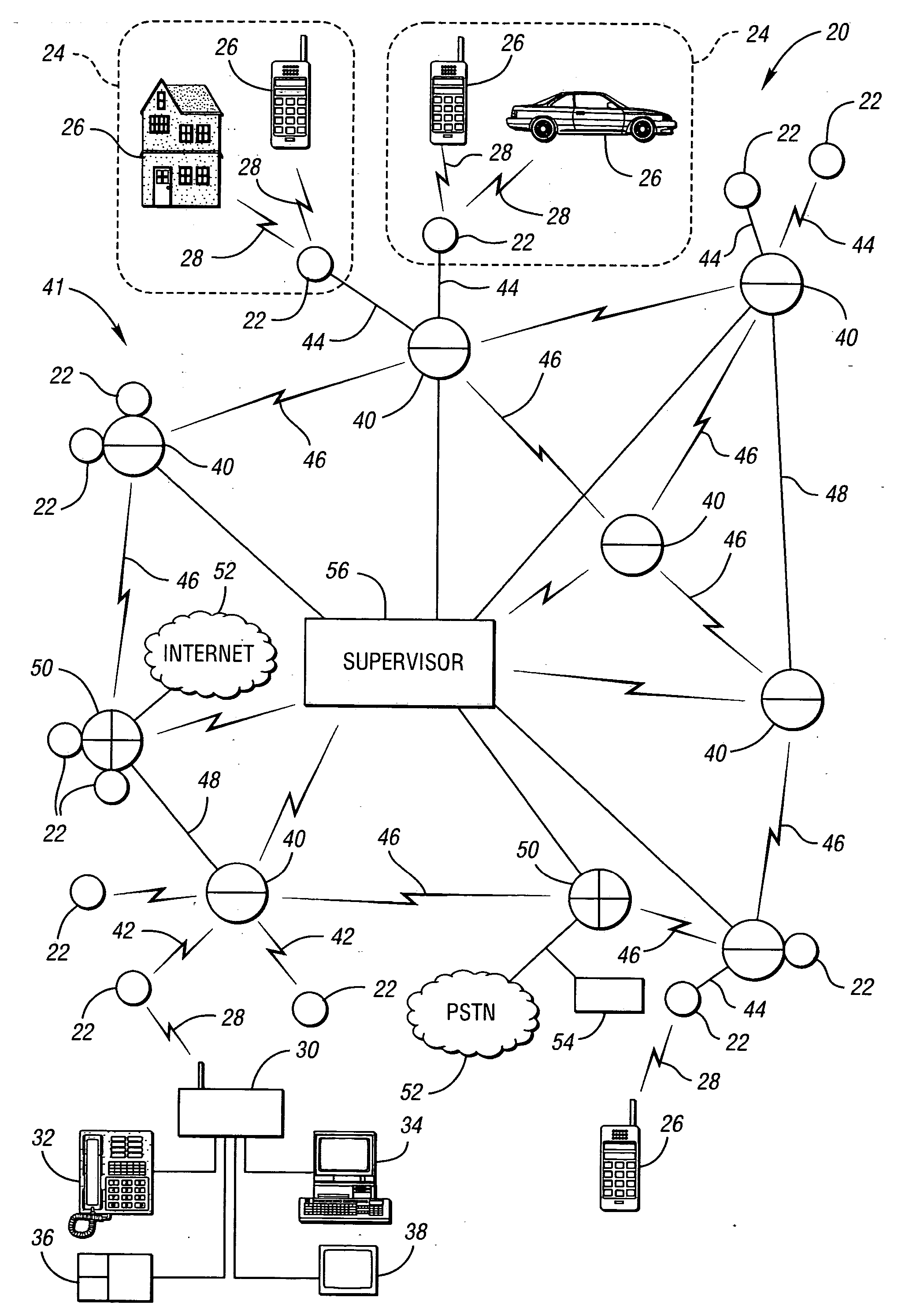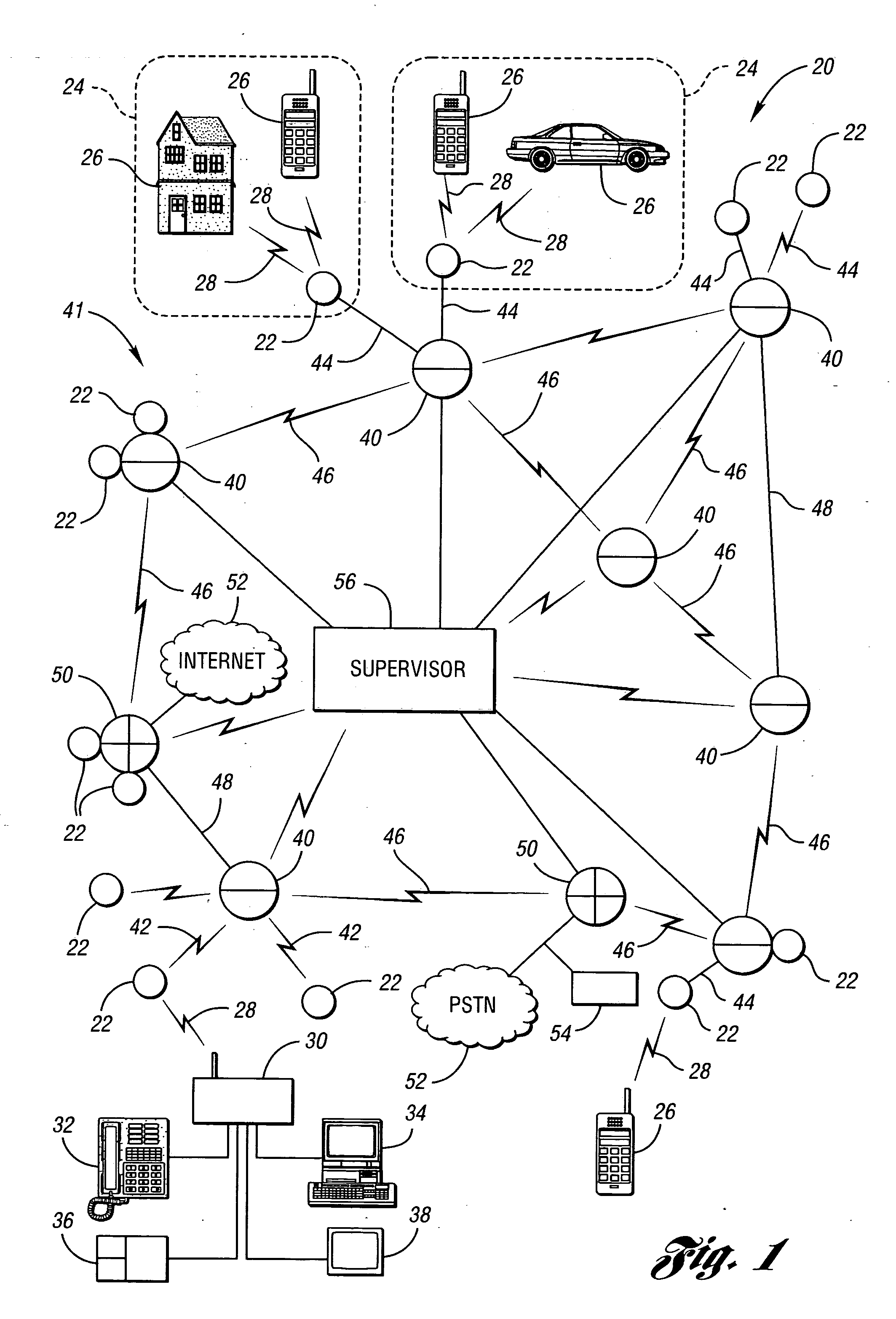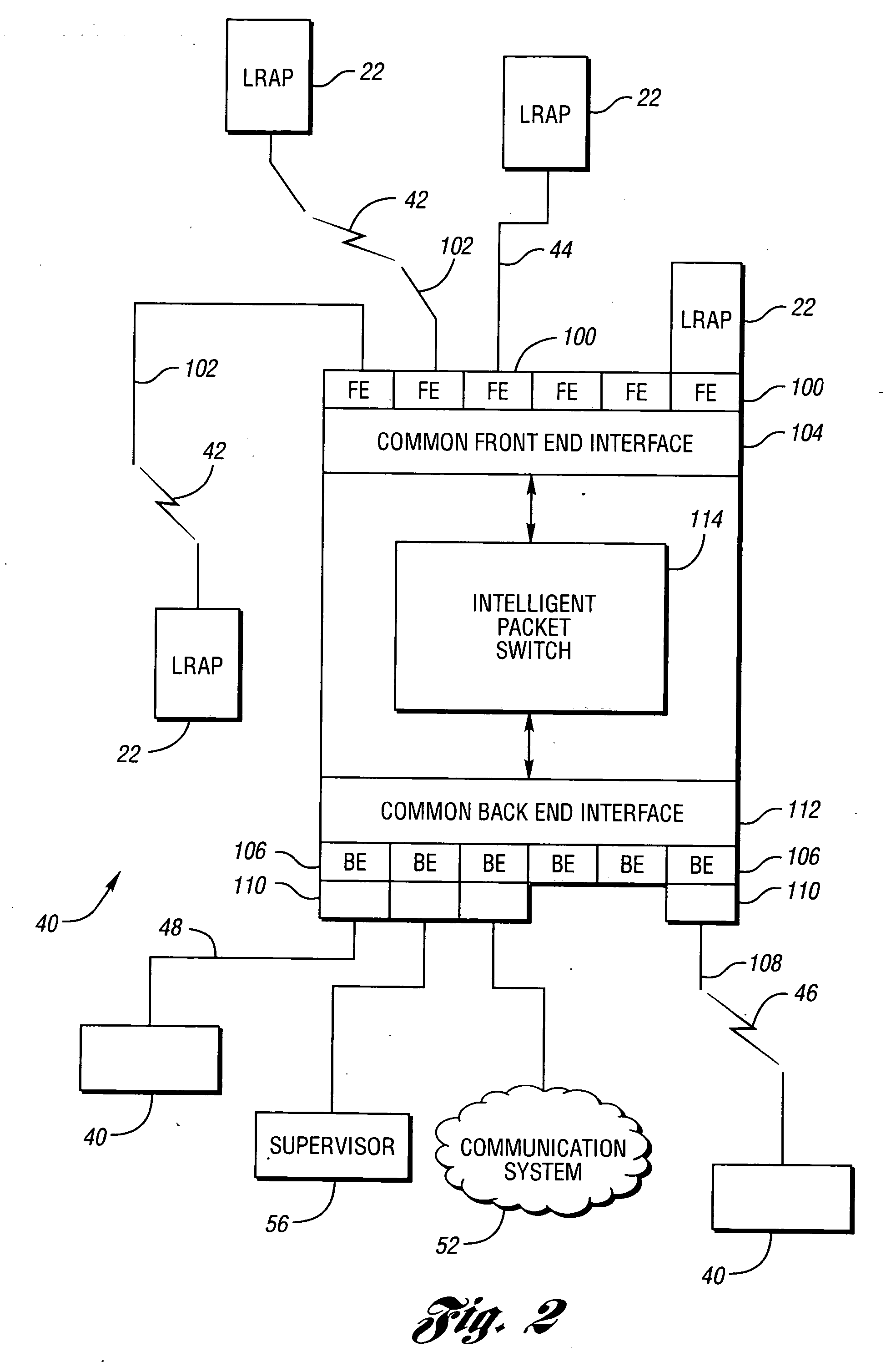Routing information packets in a distributed network
a distributed network and information packet technology, applied in data switching networks, time-division multiplexing selection, wireless commuication services, etc., can solve the problems of increasing the number of users, reducing the bandwidth and flexibility of traditional communication systems, and reducing the ability of traditional communication systems to provide the necessary bandwidth and flexibility
- Summary
- Abstract
- Description
- Claims
- Application Information
AI Technical Summary
Benefits of technology
Problems solved by technology
Method used
Image
Examples
Embodiment Construction
[0023] Referring to FIG. 1, a schematic drawing illustrating a portion of a communication system according to an embodiment of the present invention is shown. A communication system, shown generally by 20, includes a plurality of access points 22 which may be, for example, a local radio access point (LRAP). Each access point 22 defines coverage area 24 such as, for example, a cell, covering a reception range of access point 22. Coverage area 24 may be formed from many independent sectors, as may result if access point 22 uses many unidirectional antennas, or may be a single region resulting from the use of an omnidirectional antenna. Subscriber unit 26 within coverage area 24 may establish two-way wireless link 28 with access point 22. Subscriber unit 26 may also establish wireline link 29 with access point 22. Links 28, 29 may be symmetrical or asymmetrical. Subscriber unit 26 may be fixed or non-fixed and, if non-fixed, may posses varying degrees of portability and mobility. Subsc...
PUM
 Login to View More
Login to View More Abstract
Description
Claims
Application Information
 Login to View More
Login to View More - R&D
- Intellectual Property
- Life Sciences
- Materials
- Tech Scout
- Unparalleled Data Quality
- Higher Quality Content
- 60% Fewer Hallucinations
Browse by: Latest US Patents, China's latest patents, Technical Efficacy Thesaurus, Application Domain, Technology Topic, Popular Technical Reports.
© 2025 PatSnap. All rights reserved.Legal|Privacy policy|Modern Slavery Act Transparency Statement|Sitemap|About US| Contact US: help@patsnap.com



